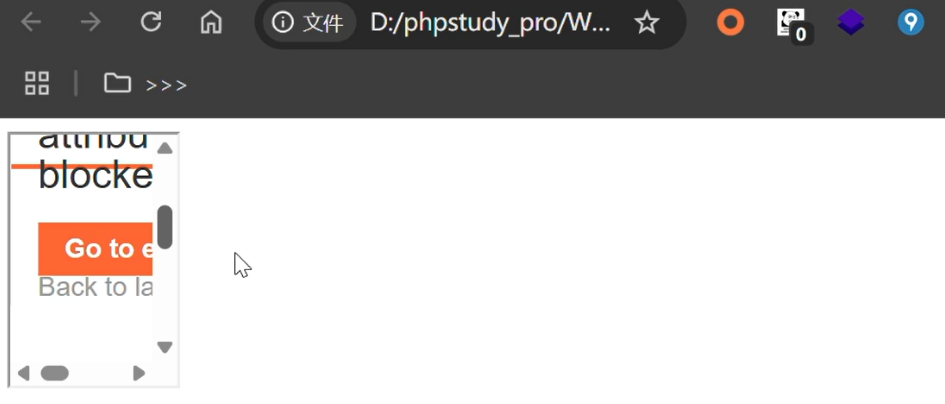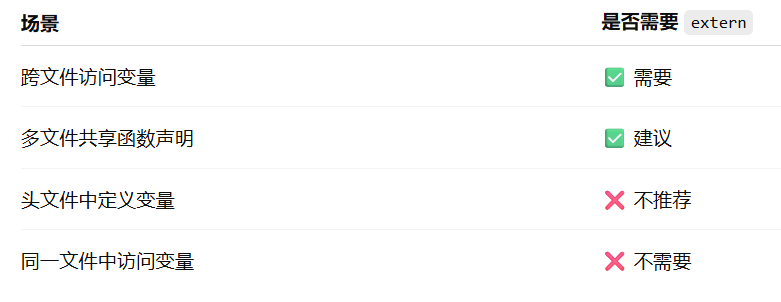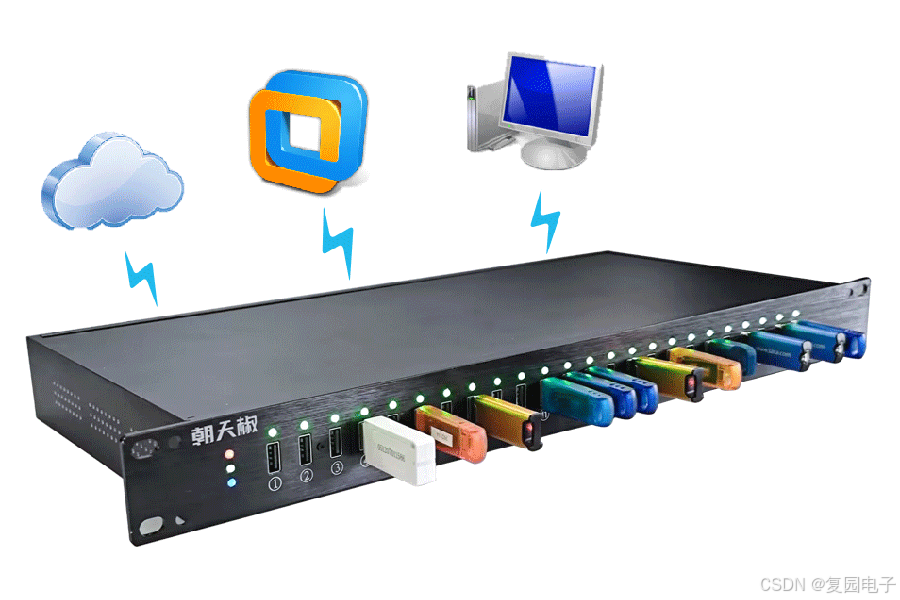AIGC笔记--Stable Diffusion源码剖析之DDIM
1--前言
以论文《High-Resolution Image Synthesis with Latent Diffusion Models》 开源的项目为例,剖析Stable Diffusion经典组成部分,巩固学习加深印象。
2--DDIM
一个可以debug的小demo:SD_DDIM
以文生图为例,剖析SD中DDIM的核心组成模块。 本质上SD的DDIM遵循论文DENOISING DIFFUSION IMPLICIT MODELS的核心公式。
3--核心模块剖析
见SD_DDIM
4--完整代码
import torch
import pytorch_lightning as plimport numpy as np
from tqdm import tqdm
from functools import partial# From https://github.com/CompVis/latent-diffusion/blob/main/ldm/modules/diffusionmodules/util.py
def make_ddim_sampling_parameters(alphacums, ddim_timesteps, eta, verbose = True):# select alphas for computing the variance schedulealphas = alphacums[ddim_timesteps] # 由于alphacums来自DDPM,所以本质上还是调用了DDPM的alphas_cumprod,即[0.9983, 0.9804, ..., 0.0058]alphas_prev = np.asarray([alphacums[0]] + alphacums[ddim_timesteps[:-1]].tolist()) # 构成alphas_prev的方法是保留前49个alphas,同时在最前面添加DDPM的alphas_cumprod[0], 即[0.9991]# according the the formula provided in https://arxiv.org/abs/2010.02502 论文中的公式16sigmas = eta * np.sqrt((1 - alphas_prev) / (1 - alphas) * (1 - alphas / alphas_prev))if verbose:print(f'Selected alphas for ddim sampler: a_t: {alphas}; a_(t-1): {alphas_prev}')print(f'For the chosen value of eta, which is {eta}, 'f'this results in the following sigma_t schedule for ddim sampler {sigmas}')return sigmas, alphas, alphas_prev# From https://github.com/CompVis/latent-diffusion/blob/main/ldm/modules/diffusionmodules/util.py
# 获取 ddim 的timesteps
def make_ddim_timesteps(ddim_discr_method, num_ddim_timesteps, num_ddpm_timesteps, verbose = True):if ddim_discr_method == 'uniform':c = num_ddpm_timesteps // num_ddim_timesteps # 1000 // 50 = 20ddim_timesteps = np.asarray(list(range(0, num_ddpm_timesteps, c))) # 间隔c取样elif ddim_discr_method == 'quad':ddim_timesteps = ((np.linspace(0, np.sqrt(num_ddpm_timesteps * .8), num_ddim_timesteps)) ** 2).astype(int)else:raise NotImplementedError(f'There is no ddim discretization method called "{ddim_discr_method}"')# assert ddim_timesteps.shape[0] == num_ddim_timesteps# add one to get the final alpha values right (the ones from first scale to data during sampling)steps_out = ddim_timesteps + 1 # 每个数值加1if verbose:print(f'Selected timesteps for ddim sampler: {steps_out}')return steps_out # [1, 21, 41, ..., 981]# From https://github.com/CompVis/latent-diffusion/blob/main/ldm/modules/diffusionmodules/util.py
def noise_like(shape, device, repeat = False):repeat_noise = lambda: torch.randn((1, *shape[1:]), device=device).repeat(shape[0], *((1,) * (len(shape) - 1)))noise = lambda: torch.randn(shape, device=device)return repeat_noise() if repeat else noise()# From https://github.com/CompVis/latent-diffusion/blob/main/ldm/modules/diffusionmodules/util.py
def make_beta_schedule(schedule, n_timestep, linear_start = 1e-4, linear_end = 2e-2, cosine_s = 8e-3):if schedule == "linear":betas = (torch.linspace(linear_start ** 0.5, linear_end ** 0.5, n_timestep, dtype = torch.float64) ** 2)elif schedule == "cosine":timesteps = (torch.arange(n_timestep + 1, dtype=torch.float64) / n_timestep + cosine_s)alphas = timesteps / (1 + cosine_s) * np.pi / 2alphas = torch.cos(alphas).pow(2)alphas = alphas / alphas[0]betas = 1 - alphas[1:] / alphas[:-1]betas = np.clip(betas, a_min=0, a_max=0.999)elif schedule == "sqrt_linear":betas = torch.linspace(linear_start, linear_end, n_timestep, dtype = torch.float64)elif schedule == "sqrt":betas = torch.linspace(linear_start, linear_end, n_timestep, dtype = torch.float64) ** 0.5else:raise ValueError(f"schedule '{schedule}' unknown.")return betas.numpy()# origin from https://github.com/CompVis/latent-diffusion/blob/main/ldm/models/diffusion/ddpm.py, modified by ljf
class DDPM(pl.LightningModule):def __init__(self, given_betas = None, beta_schedule = "linear", timesteps = 1000, linear_start = 0.00085, linear_end = 0.012, cosine_s = 8e-3):super().__init__()self.v_posterior = 0.0self.parameterization = "eps"self.register_schedule(given_betas = given_betas, beta_schedule = beta_schedule, timesteps = timesteps,linear_start = linear_start, linear_end = linear_end, cosine_s = cosine_s)def register_schedule(self, given_betas=None, beta_schedule="linear", timesteps=1000,linear_start=1e-4, linear_end=2e-2, cosine_s=8e-3):betas = make_beta_schedule(beta_schedule, timesteps, linear_start=linear_start, linear_end=linear_end,cosine_s=cosine_s) # 计算 betas [0.00085, 0.0008547, ..., 0.012] # total 1000alphas = 1. - betas # 根据betas计算alphas [0.99915, 0.9991453, ..., 0.988] # total 1000alphas_cumprod = np.cumprod(alphas, axis=0) # 计算alphas_cumprod [0.99915, 0.99915*0.9991453, ..., ..*0.988] # 与本身及前面的数进行相乘alphas_cumprod_prev = np.append(1., alphas_cumprod[:-1]) # 计算alphas_cumprod_prev [1, 0.99915, 0.99915*0.9991453, ...] # 保留前999位timesteps, = betas.shapeself.num_timesteps = int(timesteps)self.linear_start = linear_startself.linear_end = linear_endassert alphas_cumprod.shape[0] == self.num_timesteps, 'alphas have to be defined for each timestep'to_torch = partial(torch.tensor, dtype=torch.float32)self.register_buffer('betas', to_torch(betas))self.register_buffer('alphas_cumprod', to_torch(alphas_cumprod))self.register_buffer('alphas_cumprod_prev', to_torch(alphas_cumprod_prev))# calculations for diffusion q(x_t | x_{t-1}) and othersself.register_buffer('sqrt_alphas_cumprod', to_torch(np.sqrt(alphas_cumprod)))self.register_buffer('sqrt_one_minus_alphas_cumprod', to_torch(np.sqrt(1. - alphas_cumprod)))self.register_buffer('log_one_minus_alphas_cumprod', to_torch(np.log(1. - alphas_cumprod)))self.register_buffer('sqrt_recip_alphas_cumprod', to_torch(np.sqrt(1. / alphas_cumprod)))self.register_buffer('sqrt_recipm1_alphas_cumprod', to_torch(np.sqrt(1. / alphas_cumprod - 1)))# calculations for posterior q(x_{t-1} | x_t, x_0)posterior_variance = (1 - self.v_posterior) * betas * (1. - alphas_cumprod_prev) / (1. - alphas_cumprod) + self.v_posterior * betas# above: equal to 1. / (1. / (1. - alpha_cumprod_tm1) + alpha_t / beta_t)self.register_buffer('posterior_variance', to_torch(posterior_variance))# below: log calculation clipped because the posterior variance is 0 at the beginning of the diffusion chainself.register_buffer('posterior_log_variance_clipped', to_torch(np.log(np.maximum(posterior_variance, 1e-20))))self.register_buffer('posterior_mean_coef1', to_torch(betas * np.sqrt(alphas_cumprod_prev) / (1. - alphas_cumprod)))self.register_buffer('posterior_mean_coef2', to_torch((1. - alphas_cumprod_prev) * np.sqrt(alphas) / (1. - alphas_cumprod)))if self.parameterization == "eps":lvlb_weights = self.betas ** 2 / (2 * self.posterior_variance * to_torch(alphas) * (1 - self.alphas_cumprod))elif self.parameterization == "x0":lvlb_weights = 0.5 * np.sqrt(torch.Tensor(alphas_cumprod)) / (2. * 1 - torch.Tensor(alphas_cumprod))else:raise NotImplementedError("mu not supported")# TODO how to choose this termlvlb_weights[0] = lvlb_weights[1]self.register_buffer('lvlb_weights', lvlb_weights, persistent=False)assert not torch.isnan(self.lvlb_weights).all()# 模拟 UNet 预测def apply_model(self, x_noisy, t, cond, return_ids=False):return torch.rand(x_noisy.shape) # 随机返回一个latent 预测# Origin from https://github.com/CompVis/latent-diffusion/blob/main/ldm/models/diffusion/ddim.py, modified by ljf
class DDIMSampler(object):def __init__(self, model, schedule = "linear", **kwargs):super().__init__()self.model = model # DDPM的modelself.ddpm_num_timesteps = model.num_timestepsself.schedule = scheduledef register_buffer(self, name, attr):if type(attr) == torch.Tensor:if attr.device != torch.device("cuda"):attr = attr.to(torch.device("cuda"))setattr(self, name, attr)def make_schedule(self, ddim_num_steps, ddim_discretize = "uniform", ddim_eta = 0., verbose = True):# 获取ddim的timesteps [1, 21, 41, ..., 981]self.ddim_timesteps = make_ddim_timesteps(ddim_discr_method = ddim_discretize, num_ddim_timesteps = ddim_num_steps,num_ddpm_timesteps = self.ddpm_num_timesteps, verbose = verbose)alphas_cumprod = self.model.alphas_cumprod # 使用ddpm的alphas_cumprodassert alphas_cumprod.shape[0] == self.ddpm_num_timesteps, 'alphas have to be defined for each timestep'to_torch = lambda x: x.clone().detach().to(torch.float32).to(self.model.device) # lambda表达式,对每一个输入实现相同的操作self.register_buffer('betas', to_torch(self.model.betas)) # 使用ddpm的betasself.register_buffer('alphas_cumprod', to_torch(alphas_cumprod)) # 使用ddpm的alphas_cumprodself.register_buffer('alphas_cumprod_prev', to_torch(self.model.alphas_cumprod_prev)) #使用ddpm的alphas_cumprod_prev# calculations for diffusion q(x_t | x_{t-1}) and othersself.register_buffer('sqrt_alphas_cumprod', to_torch(np.sqrt(alphas_cumprod.cpu())))self.register_buffer('sqrt_one_minus_alphas_cumprod', to_torch(np.sqrt(1. - alphas_cumprod.cpu())))self.register_buffer('log_one_minus_alphas_cumprod', to_torch(np.log(1. - alphas_cumprod.cpu())))self.register_buffer('sqrt_recip_alphas_cumprod', to_torch(np.sqrt(1. / alphas_cumprod.cpu())))self.register_buffer('sqrt_recipm1_alphas_cumprod', to_torch(np.sqrt(1. / alphas_cumprod.cpu() - 1)))# ddim sampling parametersddim_sigmas, ddim_alphas, ddim_alphas_prev = make_ddim_sampling_parameters(alphacums = alphas_cumprod.cpu(),ddim_timesteps = self.ddim_timesteps,eta = ddim_eta,verbose = verbose)self.register_buffer('ddim_sigmas', ddim_sigmas)self.register_buffer('ddim_alphas', ddim_alphas)self.register_buffer('ddim_alphas_prev', ddim_alphas_prev)self.register_buffer('ddim_sqrt_one_minus_alphas', np.sqrt(1. - ddim_alphas))sigmas_for_original_sampling_steps = ddim_eta * torch.sqrt((1 - self.alphas_cumprod_prev) / (1 - self.alphas_cumprod) * (1 - self.alphas_cumprod / self.alphas_cumprod_prev))self.register_buffer('ddim_sigmas_for_original_num_steps', sigmas_for_original_sampling_steps)@torch.no_grad()def sample(self, S, batch_size, shape, conditioning = None, callback = None,img_callback = None, quantize_x0 = False, eta = 0., mask = None, x0 = None,temperature = 1., noise_dropout = 0., score_corrector = None, corrector_kwargs = None,verbose = True, x_T = None, log_every_t = 100, unconditional_guidance_scale = 1.,unconditional_conditioning = None):self.make_schedule(ddim_num_steps = S, ddim_eta = eta, verbose = verbose) # 注册各个参数# samplingC, H, W = shape # [4, 64, 64]size = (batch_size, C, H, W) # [3, 4, 64, 64]print(f'Data shape for DDIM sampling is {size}, eta {eta}')samples, intermediates = self.ddim_sampling(conditioning, size,callback = callback,img_callback = img_callback,quantize_denoised = quantize_x0,mask = mask, x0 = x0,ddim_use_original_steps = False,noise_dropout = noise_dropout,temperature = temperature,score_corrector = score_corrector,corrector_kwargs = corrector_kwargs,x_T = x_T,log_every_t = log_every_t,unconditional_guidance_scale = unconditional_guidance_scale,unconditional_conditioning = unconditional_conditioning,)return samples, intermediates@torch.no_grad()def ddim_sampling(self, cond, shape,x_T = None, ddim_use_original_steps = False,callback = None, timesteps = None, quantize_denoised = False,mask = None, x0 = None, img_callback = None, log_every_t = 100,temperature = 1., noise_dropout = 0., score_corrector = None, corrector_kwargs = None,unconditional_guidance_scale = 1., unconditional_conditioning = None):device = self.model.betas.deviceb = shape[0] # batchsizeif x_T is None:img = torch.randn(shape, device=device)else:img = x_Ttimesteps = self.ddim_timestepsintermediates = {'x_inter': [img], 'pred_x0': [img]}time_range = np.flip(timesteps) total_steps = timesteps.shape[0] # 50print(f"Running DDIM Sampling with {total_steps} timesteps")iterator = tqdm(time_range, desc='DDIM Sampler', total=total_steps)for i, step in enumerate(iterator): # 981, 961, ..., 1index = total_steps - i - 1 ts = torch.full((b,), step, device=device, dtype=torch.long) # [981, 981, 981], [961, 961, 961], ...outs = self.p_sample_ddim(img, cond, ts, index=index, use_original_steps=ddim_use_original_steps,quantize_denoised=quantize_denoised, temperature=temperature,noise_dropout=noise_dropout, score_corrector=score_corrector,corrector_kwargs=corrector_kwargs,unconditional_guidance_scale=unconditional_guidance_scale,unconditional_conditioning=unconditional_conditioning)img, pred_x0 = outs # 更新imgif callback: callback(i)if img_callback: img_callback(pred_x0, i)if index % log_every_t == 0 or index == total_steps - 1:intermediates['x_inter'].append(img)intermediates['pred_x0'].append(pred_x0)return img, intermediates@torch.no_grad()def p_sample_ddim(self, x, c, t, index, repeat_noise=False, use_original_steps=False, quantize_denoised=False,temperature=1., noise_dropout=0., score_corrector=None, corrector_kwargs=None,unconditional_guidance_scale=1., unconditional_conditioning=None):b, *_, device = *x.shape, x.deviceif unconditional_conditioning is None or unconditional_guidance_scale == 1.:e_t = self.model.apply_model(x, t, c)else:x_in = torch.cat([x] * 2) # [3, 4, 64, 64] -> [6, 4, 64, 64]t_in = torch.cat([t] * 2) # [3] -> [6]c_in = torch.cat([unconditional_conditioning, c]) # [3, 77, 768] -> [6, 77, 768]e_t_uncond, e_t = self.model.apply_model(x_in, t_in, c_in).chunk(2) # using Unete_t = e_t_uncond + unconditional_guidance_scale * (e_t - e_t_uncond) # free guidance# 使用ddpm的参数或者make_ddim_sampling_parameters()函数生成的参数,这里默认使用了后者alphas = self.model.alphas_cumprod if use_original_steps else self.ddim_alphasalphas_prev = self.model.alphas_cumprod_prev if use_original_steps else self.ddim_alphas_prevsqrt_one_minus_alphas = self.model.sqrt_one_minus_alphas_cumprod if use_original_steps else self.ddim_sqrt_one_minus_alphassigmas = self.model.ddim_sigmas_for_original_num_steps if use_original_steps else self.ddim_sigmas# select parameters corresponding to the currently considered timestepa_t = torch.full((b, 1, 1, 1), alphas[index], device = device)a_prev = torch.full((b, 1, 1, 1), alphas_prev[index], device = device)sigma_t = torch.full((b, 1, 1, 1), sigmas[index], device = device)sqrt_one_minus_at = torch.full((b, 1, 1, 1), sqrt_one_minus_alphas[index], device = device)# current prediction for x_0pred_x0 = (x - sqrt_one_minus_at * e_t) / a_t.sqrt() # 论文https://arxiv.org/pdf/2010.02502中公式(12)的第一项# direction pointing to x_tdir_xt = (1. - a_prev - sigma_t**2).sqrt() * e_t # 论文https://arxiv.org/pdf/2010.02502中公式(12)的第二项 noise = sigma_t * noise_like(x.shape, device, repeat_noise) * temperature # 论文https://arxiv.org/pdf/2010.02502中公式(12)的第三项 # 由于输入的eta为0,因此sigma_t为0,因此本式的结果为0if noise_dropout > 0.:noise = torch.nn.functional.dropout(noise, p=noise_dropout)x_prev = a_prev.sqrt() * pred_x0 + dir_xt + noise # 构成论文https://arxiv.org/pdf/2010.02502中的公式(12),即根据x_t得到x_(t-1)return x_prev, pred_x0 if __name__ == "__main__":model = DDPM() # 初始化DDPM modelsampler = DDIMSampler(model)# 模拟FrozenCLIPEmbedder的输出batchsize = 3c = torch.rand(batchsize, 77, 768) # 模拟有prompt时的embeddinguc = torch.rand(batchsize, 77, 768) # 模拟无prompt时的embedding# 使用ddim进行去噪shape = [4, 64, 64]scale = 7.5 # unconditional guidance scale: eps = eps(x, empty) + scale * (eps(x, cond) - eps(x, empty))ddim_eta = 0.0 # ddim eta (eta=0.0 corresponds to deterministic samplingsamples_ddim, _ = sampler.sample(S = 50, # 采样50步conditioning = c, # 条件embeddingbatch_size = batchsize,shape = shape,verbose = False,unconditional_guidance_scale = scale,unconditional_conditioning = uc, # 无条件embeddingeta = ddim_eta,x_T = None)assert samples_ddim.shape[0] == batchsizeassert list(samples_ddim[0].shape) == shapeprint("samples_ddim.shape: ", samples_ddim.shape)assert samples_ddim.shape[0] == batchsizeassert list(samples_ddim.shape[1:]) == shapeprint("All Done!")相关文章:

AIGC笔记--Stable Diffusion源码剖析之DDIM
1--前言 以论文《High-Resolution Image Synthesis with Latent Diffusion Models》 开源的项目为例,剖析Stable Diffusion经典组成部分,巩固学习加深印象。 2--DDIM 一个可以debug的小demo:SD_DDIM 以文生图为例,剖析SD中DDIM的…...

【BUUCTF-PWN】13-jarvisoj_level2_x64
参考:BUU pwn jarvisoj_level2_x64 64位函数调用栈 - Nemuzuki - 博客园 (cnblogs.com) 64位,开启了NX保护 执行效果如下: main函数: vulnerable_function函数 read函数存在栈溢出,溢出距离为0x808 查找后门…...

项目实战--Spring Boot 3整合Flink实现大数据文件处理
一、应用背景 公司大数据项目中,需要构建和开发高效、可靠的数据处理子系统,实现大数据文件处理、整库迁移、延迟与乱序处理、数据清洗与过滤、实时数据聚合、增量同步(CDC)、状态管理与恢复、反压问题处理、数据分库分表、跨数据…...

开发者工具攻略:前端测试的极简指南
前言 许多人存在一个常见的误区,认为测试只是测试工程师的工作。实际上,测试是整个开发团队的责任,每个人都应该参与到测试过程中。 在这篇博客我尽量通俗一点地讲讲我们前端开发过程中,该如何去测试 浏览器开发者工具简介 开…...

git保存分支工作状态
git stash...

系统架构设计师——计算机体系结构
分值占比3-4分 计算机硬件组成 计算机硬件组成主要包括主机、存储器和输入/输出设备。 主机:主机是计算机的核心部分,包括运算器、控制器、主存等组件。运算器负责执行算术和逻辑运算;控制器负责协调和控制计算机的各个部件;主存…...

3D鸡哥又上开源项目!单图即可生成,在线可玩
大家好,今天和大家分享几篇最新的工作 1、Unique3D Unique3D从单视图图像高效生成高质量3D网格,具有SOTA水平的保真度和强大的通用性。 如下图所示 Unique3D 在 30 秒内从单视图野生图像生成高保真且多样化的纹理网格。 例如属于一张鸡哥的打球写真照 等…...

设计模式实现思路介绍
设计模式是在软件工程中用于解决特定问题的典型解决方案。它们是在多年的软件开发实践中总结出来的,并且因其重用性、通用性和高效性而被广泛接受。设计模式通常被分为三种主要类型:创建型、结构型和行为型。 创建型设计模式 创建型设计模式专注于如何创…...

Node.js学习教程
Node.js学习教程可以从基础到高级,逐步深入理解和掌握这一强大的JavaScript运行环境。以下是一个详细的Node.js学习教程概述,帮助初学者和进阶者更好地学习Node.js。 一、Node.js基础入门 1. 了解Node.js 定义:Node.js是一个基于Chrome V8…...

项目页面优化,我们该怎么做呢?
避免页面卡顿 怎么衡量页面卡顿的情况呢? 失帧和帧率FPS 60Hz就是帧率fps,即一秒钟60帧,换句话说,一秒钟的动画是由60幅静态图片连在一起形成的。 卡了,失帧了,或者掉帧了,一秒钟没有60个画面&…...

【PCIe】P2P DMA
PCIe P2P (peer-to-peer communication)是PCIe的一种特性,它使两个PCIe设备之间可以直接传输数据,而不需要使用主机RAM作为临时存储。如下图3的走向 比如EP1要发送和数据给EP2,操作流程如下: 1. 打开EP1的dma控制器;--client侧 …...

Linux shell编程学习笔记62: top命令 linux下的任务管理器
0 前言 top命令是Unix 和 Linux下常用的性能分析工具,提供了一个动态的、交互式的实时视图,显示系统的整体性能信息,以及正在运行的进程的相关信息,包括各个进程的资源占用状况,类似于Windows的任务管理器。 1 top命令…...

如何在Java中实现高性能的网络通信
如何在Java中实现高性能的网络通信 大家好,我是免费搭建查券返利机器人省钱赚佣金就用微赚淘客系统3.0的小编,也是冬天不穿秋裤,天冷也要风度的程序猿! 1. 引言 在当今互联网时代,高性能的网络通信是构建大规模分布…...
政务单位网站SSL证书选择策略
在数字化快速发展的今天,政务单位网站作为政府与公众沟通的重要桥梁,其安全性和可信度显得尤为重要。SSL证书作为保障网站安全的重要手段,其选择对于政务单位网站来说至关重要。本文将探讨政务单位网站在选择SSL证书时应该考虑的因素…...

零基础入门 Ai 数据挖掘竞赛-速通 Baseline-1
#AI夏令营 #Datawhale #夏令营 本项目为Datawhale 2024 年 AI 夏令营赛事,零基础入门 AI 数据挖掘竞赛-速通学习手册配套的代码项目。 项目链接:https://aistudio.baidu.com/bd-cpu-02/user/2961857/8113198/home#codelab 任务目标 根据给的test&…...
(Python))
第二十六章 生成器(generator)(Python)
文章目录 前言一、生成器函数 前言 在 Python 中,使用了 yield 的函数被称为生成器(generator) yield 是一个关键字,用于定义生成器函数,生成器函数是一种特殊的函数,可以在迭代过程中逐步产生值ÿ…...

Vue通过Key管理状态
Vue通过Key管理状态 Vue 默认按照“就地更新”的策略来更新,通过 v-for 渲染的元素列表。当数据项的顺序改变时,Vue 不会随之移动 DOM 元素的顺序,而是就地更新每个元素,确保它们在原本指定的索引位置上渲染。为了给 Vue 一个提示…...

鸿蒙 HarmonyOs 网络请求 快速入门
官方文档: ArkUI简介-ArkUI(方舟UI框架)-应用框架 | 华为开发者联盟 (huawei.com) 一、通过原有的http组件进行网络请求(方式一) 1.1 HttpRequestOptions的操作 名称类型描述methodRequestMethod请求方式ÿ…...

Kubernetes云原生存储解决方案openebs部署实践-4.0.1版本(helm部署)
Kubernetes云原生存储解决方案openebs部署实践-4.0.1版本(helm部署) 简介 OpenEBS 是一种开源云原生存储解决方案。OpenEBS 可以将 Kubernetes 工作节点可用的任何存储转化为本地或复制的 Kubernetes 持久卷。OpenEBS 帮助应用和平台团队轻松地部署需要…...

如何使用Pip生成requirements.txt文件:全面指南与实践示例
如何使用Pip生成requirements.txt文件:全面指南与实践示例 Python的包管理工具Pip是Python开发中不可或缺的一部分。它不仅可以帮助我们安装和管理Python包,还可以通过生成requirements.txt文件来记录项目所需的所有依赖。本文将详细介绍如何使用Pip生成…...

Vim 调用外部命令学习笔记
Vim 外部命令集成完全指南 文章目录 Vim 外部命令集成完全指南核心概念理解命令语法解析语法对比 常用外部命令详解文本排序与去重文本筛选与搜索高级 grep 搜索技巧文本替换与编辑字符处理高级文本处理编程语言处理其他实用命令 范围操作示例指定行范围处理复合命令示例 实用技…...
。】2022-5-15)
【根据当天日期输出明天的日期(需对闰年做判定)。】2022-5-15
缘由根据当天日期输出明天的日期(需对闰年做判定)。日期类型结构体如下: struct data{ int year; int month; int day;};-编程语言-CSDN问答 struct mdata{ int year; int month; int day; }mdata; int 天数(int year, int month) {switch (month){case 1: case 3:…...

R语言AI模型部署方案:精准离线运行详解
R语言AI模型部署方案:精准离线运行详解 一、项目概述 本文将构建一个完整的R语言AI部署解决方案,实现鸢尾花分类模型的训练、保存、离线部署和预测功能。核心特点: 100%离线运行能力自包含环境依赖生产级错误处理跨平台兼容性模型版本管理# 文件结构说明 Iris_AI_Deployme…...

k8s从入门到放弃之Ingress七层负载
k8s从入门到放弃之Ingress七层负载 在Kubernetes(简称K8s)中,Ingress是一个API对象,它允许你定义如何从集群外部访问集群内部的服务。Ingress可以提供负载均衡、SSL终结和基于名称的虚拟主机等功能。通过Ingress,你可…...

渗透实战PortSwigger靶场-XSS Lab 14:大多数标签和属性被阻止
<script>标签被拦截 我们需要把全部可用的 tag 和 event 进行暴力破解 XSS cheat sheet: https://portswigger.net/web-security/cross-site-scripting/cheat-sheet 通过爆破发现body可以用 再把全部 events 放进去爆破 这些 event 全部可用 <body onres…...

工程地质软件市场:发展现状、趋势与策略建议
一、引言 在工程建设领域,准确把握地质条件是确保项目顺利推进和安全运营的关键。工程地质软件作为处理、分析、模拟和展示工程地质数据的重要工具,正发挥着日益重要的作用。它凭借强大的数据处理能力、三维建模功能、空间分析工具和可视化展示手段&…...

深入解析C++中的extern关键字:跨文件共享变量与函数的终极指南
🚀 C extern 关键字深度解析:跨文件编程的终极指南 📅 更新时间:2025年6月5日 🏷️ 标签:C | extern关键字 | 多文件编程 | 链接与声明 | 现代C 文章目录 前言🔥一、extern 是什么?&…...

【碎碎念】宝可梦 Mesh GO : 基于MESH网络的口袋妖怪 宝可梦GO游戏自组网系统
目录 游戏说明《宝可梦 Mesh GO》 —— 局域宝可梦探索Pokmon GO 类游戏核心理念应用场景Mesh 特性 宝可梦玩法融合设计游戏构想要素1. 地图探索(基于物理空间 广播范围)2. 野生宝可梦生成与广播3. 对战系统4. 道具与通信5. 延伸玩法 安全性设计 技术选…...

学习STC51单片机32(芯片为STC89C52RCRC)OLED显示屏2
每日一言 今天的每一份坚持,都是在为未来积攒底气。 案例:OLED显示一个A 这边观察到一个点,怎么雪花了就是都是乱七八糟的占满了屏幕。。 解释 : 如果代码里信号切换太快(比如 SDA 刚变,SCL 立刻变&#…...

USB Over IP专用硬件的5个特点
USB over IP技术通过将USB协议数据封装在标准TCP/IP网络数据包中,从根本上改变了USB连接。这允许客户端通过局域网或广域网远程访问和控制物理连接到服务器的USB设备(如专用硬件设备),从而消除了直接物理连接的需要。USB over IP的…...
